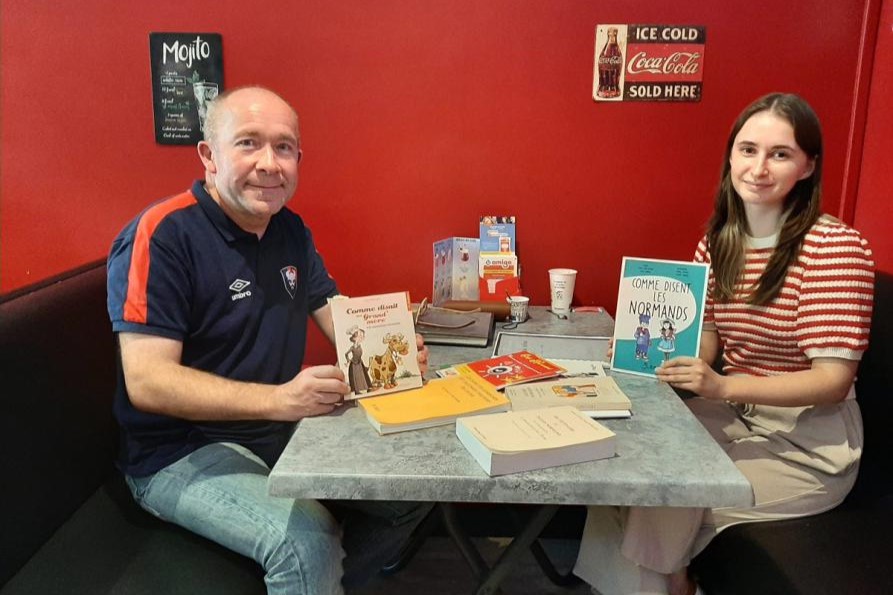| Author: Małgorzata Kłoskowicz, PhD |
“I come from Rydułtowy, a small mining town. There, it was impossible to escape from the Silesian language. I was one of the few people in my class who tried to use the so-called pure, correct Polish language. Out of concern for my future, my mother ensured I had this special ability of quickly ‘switching’ from one type of speech to another, depending on the circumstances”, says Magdalena Chowaniec, MA, sociolinguist from the University of Silesia in Katowice. Although, as she admits, her relationship with the Silesian dialect, also sometimes referred to as the Silesian language, was not simple, today she uses it more and more willingly. It has also become one of the three dialects she analyses in terms of revitalisation strategies.
Local, regional, endangered
If we were to think about the concept of revitalisation, we would probably first think about large, destroyed urban spaces that we try to be bring back to life. It turns out that this word can also be used in the context of protecting languages and dialects that are endangered or degraded in some way. As Magdalena Chowaniec, MA, emphasises, researchers use different terms for such languages. They can be called local, regional, endangered or minority languages.
“Broadly speaking, these are languages with a status subordinated to the dominant language of a given country”, explains the researcher. Magdalena Chowaniec, MA, chose three dialects for her research: ones from Silesia, Normandy and Busan, and she analyses them from the perspective of their revitalisation strategies.
“I was primarily looking for languages with different sociolinguistic situations”, says the researcher. “Silesian is my language, so its presence in the research was obvious. I got to know the Norman language during my stay in France. This particular one is in a really difficult position. However, it is the third one which may seem the most surprising. I was curious about the situation of a language that is in some way endangered in a completely different part of the world, where there is no European Charter for Regional or Minority Languages, which would facilitate establishing understanding between communities using such languages and public administration. And so I chose South Korea and the Busan dialect, used primarily by the inhabitants of Busan, the second largest Korean city”, adds the scientist.
The main goal of her research is to compare revitalisation strategies. Such activities have different goals depending on the sociolinguistic situation of a given language. “That being said, there is no one way. The fact that certain actions worked great for one language does not guarantee success when applied to another”, says the PhD student.
As an example, she recalls the expert-approved revitalisation of the Basque language, which was, among other efforts, codified. On the other hand, the same procedure applied to the Breton language has led to a situation in which generations of traditional and new speakers of the language use different varieties of it, which makes communication difficult. Therefore, in this case, we should not blindly duplicate the developed strategies, but rather we must first understand the situation well and then adapt the solutions to the diagnosed needs.
“These may include, for example, political actions, increasing the number of users or changing the perception of the language”, says the researcher.
Magdalena Chowaniec, MA, during an interview with one of the Norman activists, Pascal Goubelin from the La Chouque association | private archive
Ślōnskŏ gŏdka, Normaund, 부산말 Busanmal
According to the 2021 National Population Census, almost 458,000 people use the Silesian language at home. Magdalena Chowaniec, MA, admits that its sociolinguistic situation is getting better and better because the revitalisation processes have been carried out intensively for a long time and in many ways.
“These are political actions aimed at granting it the status of a regional language. Codification has begun, for example we have the Silesian Language Council and the Silesian alphabet, as well as the Silesian language textbook – ślabikorz. Interesting cultural and art initiatives are undertaken. Literary texts are translated; you can watch films with a Silesian voice-over in the cinema, although I admit that I have never seen such a screening because tickets are selling like hot cakes. But that is not all. We have an educational offer about the region, materials for all target groups, gadgets promoting the Silesian language…”, comments the researcher.
As she adds, these are not initiatives undertaken for the sake of an external recipient, for example to promote the region, but more so they allow us to rediscover and perhaps even disenchant the language for its users.
“I can also say that today such a symbolic revitalisation of the Silesian language is taking place in me. In France, during my Erasmus trip, I met many young people from various national minorities. As we talked, I started asking myself: why shouldn’t I appreciate my own culture? I have been learning foreign languages for so many years to become a multilingual person. Meanwhile, I was bilingual already as a child. Now I say with full confidence that I am a proud user of the Silesian language and I see that these changes are taking place not only in me”, admits the PhD student.
The Norman language is in a completely different sociolinguistic situation. In its case, the main focus is on new users. It is only spoken by the grandparents and older generations, which means that unless younger speakers appear, the language will soon be dead.
“In this case, language revitalisation means a fight for survival. The fact that it has many dialects within itself does not make the task any easier. Moreover, it is currently used not only in mainland Normandy, in the north of France, but also on several Channel Islands, which are dependencies of the British Crow”, explains the researcher.
In turn, the Busan language is spoken by the inhabitants of the second largest city in South Korea, Busan.
“Although the number of users in this case is large, the problem turns out to be its status. Many people are ashamed to use it”, says Magdalena Chowaniec, MA.
She adds that Busan is a city that focuses on internationalisation, hence many effects of globalisation can be observed there. Due to these processes, the Busan language seems to have been somewhat neglected. It is exhibited during various cultural festivals and even in films – but more as a curiosity, as an element of folklore.
“Among the interesting initiatives, it is worth mentioning special educational meetings for spouses from the Busan area whose families speak different varieties of the languages. Thanks to the meetings, they can communicate”, explains the researcher. “To better understand these processes, I am currently continuing my research in Busan, getting to know the culture that interests me up close”, she adds.
Comparative analyses conducted by Magdalena Chowaniec, MA, are two-stage. The first stage is survey research on linguistic practices and opinions among users of each language. The scientist wants to learn more about their needs and attitudes towards language. In the second stage, she will meet with activists directly involved in activities promoting a given language and who undertake various initiatives aimed at revitalisation. The culmination of the research will be a comparison of the described revitalisation strategies used for each of the three languages and relating them to the diagnosed and described needs.
“Finally, I would like to add that there is no such thing as the natural death of a language. The traditional villains, such as imperialism, globalisation and the ‘free’ market, are phenomena that establish a hierarchy between languages. Some strengthen their position on the linguistic exchange of values, others become weaker, losing in the eyes of the world and their own users”, sums up the scientist.
Article ‘There is no such thing as the natural death of a language’ was published in the November issue of University of Silesia Magazine No. 2 (322).
The PhD student from the University of Silesia is currently conducting research in Busan (South Korea), where she talks to speakers of the Busan dialect | Photo by Magdalena Chowaniec







